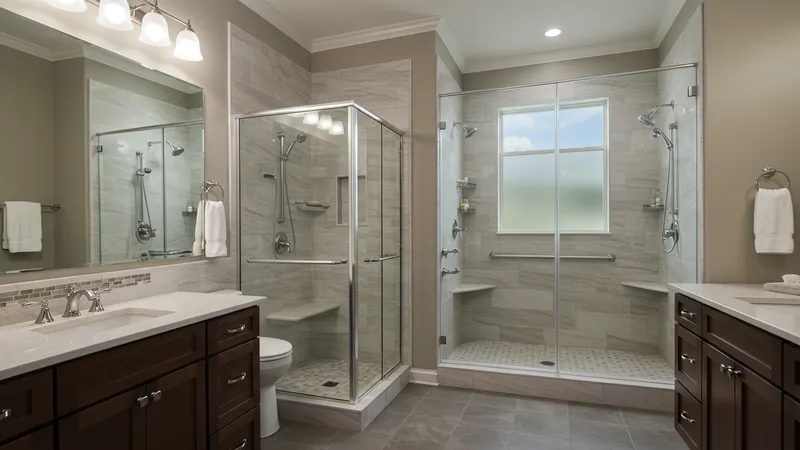
Design And Installation Options For Walk-In Showers
Designing and installing a walk-in shower is an innovative way to modernize bathrooms, especially for those seeking convenience, accessibility, and a touch of luxury. This process involves a variety of considerations, from choosing the right materials and layouts to selecting methods that align with your home’s unique structural aspects. Both design and installation play huge roles in shaping the final look, function, and value of a walk-in shower, particularly within residential spaces across the United States.
Exploring design and installation options for walk-in showers means navigating multiple choices: from barrier-free entries and glass enclosures to customized fixtures and advanced waterproofing systems. Homeowners and contractors alike are prioritizing features that combine comfort, style, and low maintenance. As American households increasingly seek bathroom remodels that add usability and future-proof properties, the diversity in these solutions has expanded considerably.

- Delta Faucet MultiChoice Universal Shower System: Versatile design, $325–$600.
- Kohler LuxStone Walk-In Shower: Custom wall panels, $7,000–$15,000 installed.
- MrSteam iDream Steam Shower Package: Integrated steam option, $5,500–$8,500.
- Laticrete HYDRO BAN Waterproofing System: Advanced waterproofing, $200–$400 for materials.
- DreamLine Enigma-X Frameless Glass Shower Enclosure: Modern glass enclosure, $1,000–$1,500.
- Moen Inovato Handheld Shower Set: Adaptive handheld fixtures, $120–$300.
- Schluter Kerdi Shower Tray System: Pre-sloped base, $200–$350.
- American Standard Passage Walk-In Shower Kit: Easy installation kit, $2,200–$2,800.
- FloorScore Certified Slip-Resistant Tile: Safe flooring, $4–$9 per sq ft.
- Bath Fitter Custom Walk-In Shower Installation: Full-service installation, $5,000–$10,000.
The demand for walk-in showers is rising sharply in the United States, with interior designers and homeowners shifting focus toward barrier-free designs that enhance accessibility. For example, the Kohler LuxStone Walk-In Shower and American Standard Passage Walk-In Shower Kit offer customizable wall panels and modular systems, making them popular in both urban and suburban homes.
Comparing installation methods reveals significant differences in complexity and cost. While prefabricated kits like the DreamLine Enigma-X minimize installation time and disruption, fully custom builds using slip-resistant tiles and professional waterproofing achieve a more tailored result, generally at a higher investment.
Waterproofing options are vital for ensuring the durability and hygiene of walk-in showers. Products such as the Laticrete HYDRO BAN and Schluter Kerdi Shower Tray System are trusted in the industry for their reliability and coverage. Safety underfoot is also a major concern, leading to widespread adoption of FloorScore Certified Slip-Resistant Tile for both public and residential settings.
Ultimately, the right walk-in shower solution must balance design preferences, installation requirements, budget, and user needs. Americans are increasingly attracted to integrated features such as steam shower packages and adaptive handheld fixtures, with trends showing a significant shift toward wellness-oriented spaces.
As you explore the spectrum of design and installation options for walk-in showers, the deeper details reveal even more valuable insights ahead—especially when it comes to customization, longevity, and the latest innovations that continue to shape modern American bathrooms.